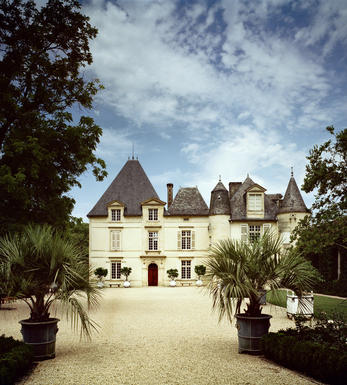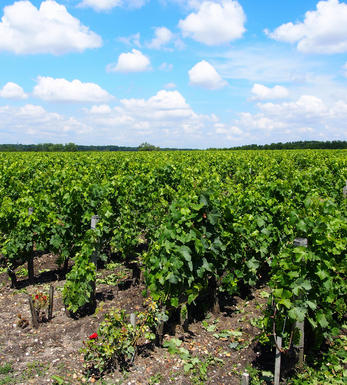
1989 Château Haut-Brion, Pessac-Léognan, Bordeaux

Critics reviews
A legendary wine, and one that I have only tried twice in my life (and this time thanks to a generous friend in London). It's always a bit nerve-racking to uncork bottles that have so much history resting on their shoulders, but it more than lived up to billing. I hesitate to give a 'drink to' date, as this particular bottle has proved stubbornly long-living, despite 1989 being such a hot and dry year, and a number of them now on their final innings.
It is very clearly in its tertiary phase, with saffron, tobacco and roasted earth notes, but there is still fruit here, and an explosion of cigar box, rose petal and liqourice aromatics. I'm not suggesting that this is easy to get hold of, but if you are able to, take your time with it, and share it with friends who will enjoy it as much as you will do.
Drink 2021 - 2035
Jane Anson, JaneAnson.com (August 2021)
The 1989 Haut-Brion remains one of the outstanding achievements of the decade, and it consistently flirts with perfection. I was fortunate to taste the wine three times over the space of six months, though this tasting note comes from a bottle poured at the château by Jean-Philippe Delmas – the first time I had ever tasted an ex-château bottle. It is a fabulous wine. Showing little maturity in terms of bricking, it has a fabulous bouquet of graphite, clove and tobacco aromas that burst from the glass, perhaps with a little more amplitude than others I have tasted.
The palate is perfectly balanced, displaying amazing depth and perfect acidity, and (unsurprisingly, given its provenance) youthful and seemingly with many chapters to go. More floral elements emerge with time: violets on the nose and then later, a taste of eau-de-vie toward the finish. An astonishing wine that will give many more years of pleasure. Tasted from an ex-château bottle at the estate.
Drink 2019 - 2070
Neal Martin, Vinous.com (September 2019)
A very famous wine! Mid ruby. No tannin left. Exceptionally aromatic. Judged by the sommelier Gaëtan Lacoste (very familiar with Haut-Brion's wines) too light now to be decanted. Fresh and sweet but by now relatively light compared to how I remember it. Very refreshing and zesty. Not as opulent as it once was. Very pretty and fresh with a lightly saline note.
Drink 2005 - 2024
Jancis Robinson MW, JancisRobinson.com (January 2019)
A spectacular wine that only goes from strength to strength, and which ranks among the pinnacles of my birth year vintage, the 1989 Haut-Brion wafts from the glass with a rich bouquet of blackberries, blackcurrants, cigar wrapper, loamy soil, black truffle, burning embers and vine smoke.
Medium to full-bodied, deep and concentrated, it's sumptuous and dramatic, with huge reserves of fruit that are complemented by carnal, savory nuances and framed by melting tannins and ripe acids. Concluding with a long, resonant finish, the only criticism one can make is that a 750-milliliter bottle simply isn't enough.
Drink 2009 - 2059
William Kelley, Wine Advocate (February 2022)
This continues to be a perfect wine with a beautiful, dense character of tobacco and sweet fruits. Chocolate, toasted walnuts and flowers here too. It's full-bodied with velvety tannins. Lasts for minutes on the palate.
James Suckling, JamesSuckling.com (June 2016)
This continues to be one of the immortal wines and one of the greatest young Bordeaux wines of the last half-century. Consistently prodigious and almost a sure bet to top the scoring card of any blind tasting of this vintage as well as other years, the 1989 Haut-Brion is a seamless, majestic classic, and a tribute to this phenomenal terroir and its singular characteristics.
The wine still has a very thick, viscous-looking ruby/purple color, a spectacular, young but awesome smorgasbord of aromas ranging from scorched earth, liquid minerals, graphite, blackberry and black currant jam to toast, licorice, and spice box. The levels of fruit, extract, and glycerin in this viscous, full-bodied, low-acid wine are awe-inspiring. The brilliant symmetry of the wine, extraordinary purity, and seamlessness are the hallmarks of a modern-day legend.
It is still in its pre-adolescent stage of development, and I would not expect it to hit its full plateau of maturity for another 3-5 years, but this should be an Haut-Brion that rivals the greatest ever made at this estate. Life is too short not to drink this wine as many times as possible! A modern day clone of the 1959? Anticipated maturity: 2005-2030. Last tasted, 1/03.
Drink 2003 - 2030
Robert M. Parker, Jr., Wine Advocate (January 2003)
This legendary vintage trades in the market at multiples of the price of other vintages. It is, however, a sublime masterpiece of a wine. There is still a super-ripe aroma of black plum and currants, strongly accented with smoke, game and cedar elements. Firm and dense on the palate, with an undertone of dark chocolate and ground coffee on the finish. It is starting to mature now, but will last another 40 years at least with this level of structure and fruit.
Drink 2023 - 2045
Charles Curtis MW, Decanter.com (July 2023)
A beautifully complex, layered wine that offers everything you could want in a mature Bordeaux, the 1989 Château Haut-Brion reveals a deeper plum hue with a touch of bricking on the rim. This is followed by a textbook Haut-Brion nose of smoky, darker currants, smoked tobacco, cedarwood, truffle, and forest floor. With medium to full-bodied richness, a layered, seamless mouthfeel, integrated, silky tannins, and a good spine of acidity, it takes ample air to show at its best, but it's clearly in its prime drinking window.
Jeb Dunnuck, JebDunnuck.com (May 2023)
About this WINE

Chateau Haut-Brion
The only property from outside the Médoc to be included in the 1855 Classification, Haut-Brion’s viticultural history can be traced back further than its Médoc First Growth counterparts. Samuel Pepys even mentions it in his diaries. Situated in what is now Pessac-Léognan, the property finds itself now in the suburbs of the ever-encroaching city of Bordeaux.
After falling into a state of disrepair the estate was purchased in 1935 by Clarence Dillon, an American financier, since when it has enjoyed a steady and continual resurgence to a position of pre-eminence. Dillon’s great-grandson, Prince Robert of Luxembourg, now runs the estate, but a key influence in the reputation which Haut-Brion enjoys today is the Delmas family. George Delmas was manager and wine-maker until 1960, when his son Jean-Bernard took over. Jean- Bernard was a visionary figure, responsible for a number of important innovations, and on his retirement in 2003 his son Jean-Philippe took over as Directeur Générale.
The vineyard is planted to 40% Cabernet Sauvignon, 37% Merlot and 18% Cabernet Franc. A stunning white wine is also made, from a part of the vineyard which is 63% Semillon and 37% Sauvignon Blanc. Production is smaller than at the other First Growth Wines, totalling about 20,000 cases, shared between the Grand Vin and a second wine, formerly called Bahans-Haut-Brion but changed in 2007 to Clarence de Haut-Brion in recognition of Clarence Dillon. Production of Haut Brion Blanc is minute, less than 800 cases in most years.
Beginning with the 2009 vintage a new white wine was introduced in the place of Clarence: La Clarté de Haut-Brion, the offspring of Domaine Clarence Dillon's two prestigious white wines: Château Haut-Brion Blanc and Château La Mission Haut-Brion Blanc.
Fermentation of the red wines takes place in stainless steel vats, after which the wine will spend 22 months, sometimes more, in new oak barrels before being bottled unfiltered. For the white wine fermentation takes place in new oak barrels, after which the wine spends a further year to 15 months on its lees in barrel before bottling. The white wine is truly sensational, equivalent in class to a top-flight White Burgundy Grand Cru, but its scarcity means that it is rarely seen.
The red wine is no less extraordinary; at its best it displays text-book Graves characteristics of cigar-box, curranty fruit, earth, smoky spice and cassis. The high Merlot content, compared to the Médoc First Growths, gives it a voluptuous edge, but does not in any way detract from its ability to age.

Pessac-Leognan
In 1986 a new communal district was created within Graves, in Bordeaux, based on the districts of Pessac and Léognan, the first of which lies within the suburbs of the city. Essentially this came about through pressure from Pessac-Léognan vignerons, who wished to disassociate themselves from growers with predominately sandy soils further south in Graves.
Pessac-Léognan has the best soils of the region, very similar to those of the Médoc, although the depth of gravel is more variable, and contains all the classed growths of the region. Some of its great names, including Ch. Haut-Brion, even sit serenely and resolutely in Bordeaux's southern urban sprawl.
The climate is milder than to the north of the city and the harvest can occur up to two weeks earlier. This gives the best wines a heady, rich and almost savoury character, laced with notes of tobacco, spice and leather. Further south, the soil is sandier with more clay, and the wines are lighter, fruity and suitable for earlier drinking.
Recommended Châteaux: Ch. Haut-Brion, Ch. la Mission Haut-Brion, Ch. Pape Clément, Ch Haut-Bailly, Domaine de Chevalier, Ch. Larrivet-Haut-Brion, Ch. Carmes Haut-Brion, Ch. La Garde, Villa Bel-Air.

Cabernet Sauvignon Blend
Cabernet Sauvignon lends itself particularly well in blends with Merlot. This is actually the archetypal Bordeaux blend, though in different proportions in the sub-regions and sometimes topped up with Cabernet Franc, Malbec, and Petit Verdot.
In the Médoc and Graves the percentage of Cabernet Sauvignon in the blend can range from 95% (Mouton-Rothschild) to as low as 40%. It is particularly suited to the dry, warm, free- draining, gravel-rich soils and is responsible for the redolent cassis characteristics as well as the depth of colour, tannic structure and pronounced acidity of Médoc wines. However 100% Cabernet Sauvignon wines can be slightly hollow-tasting in the middle palate and Merlot with its generous, fleshy fruit flavours acts as a perfect foil by filling in this cavity.
In St-Emilion and Pomerol, the blends are Merlot dominated as Cabernet Sauvignon can struggle to ripen there - when it is included, it adds structure and body to the wine. Sassicaia is the most famous Bordeaux blend in Italy and has spawned many imitations, whereby the blend is now firmly established in the New World and particularly in California and Australia.


Buying options
Add to wishlist
Description
This legendary vintage trades in the market at multiples of the price of other vintages. It is, however, a sublime masterpiece of a wine. There is still a super-ripe aroma of black plum and currants, strongly accented with smoke, game and cedar elements. Firm and dense on the palate, with an undertone of dark chocolate and ground coffee on the finish. It is starting to mature now, but will last another 40 years at least with this level of structure and fruit.
Drink 2023 - 2045
Charles Curtis MW, Decanter.com (July 2023)
wine at a glance
Delivery and quality guarantee